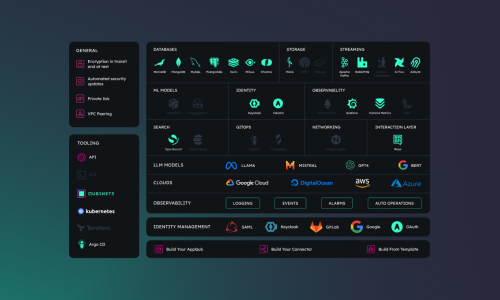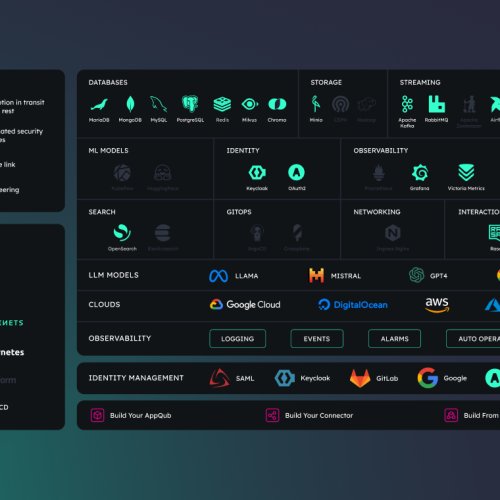On September 22, the technology conglomerate Cisco announced that they would pay $28 billion to buy Splunk. This is the largest deal in the sector this year and the largest amount Cisco has ever paid for a company ever; the deal is in top 10 acquisitions in the IT sector in history.

Before the Splunk acquisition, the biggest enterprise software deal of the year was Silver Lake’s $12 billion acquisition of AI driven Experience Management (XM) software – Qualtrics. Cisco decided to shell out $28 billion because of their huge interest in artificial intelligence and how it will soon play a much bigger role in cybersecurity.

“Our combined capabilities will drive the next generation of AI-enabled security and observability. From threat detection and response to threat prediction and prevention, we will help make organizations of all sizes more secure and resilient.”, Cisco chair and CEO Chuck Robbins said in a release.
Cisco is an American company headquartered in San Jose, California. It was founded in 1984 by Sandy Lerner and Leonard Bosack. Cisco is one of the largest developers and manufacturers of network hardware, software, telecommunications equipment and services. The company’s revenue is in billions, or rather the company’s realized revenue in 2022 is 51.55 billion US dollars. The company is listed on NASDAQ and, at the moment, the value of the shares ranges from 50 to 55 dollars per share.
What is Splunk?
In today’s world of data, information is power. The collection and processing of this data is the focus of Splunk, one of the world leaders in data processing and analytics (“data analytics”). Splunk is one of the first global companies to envision a world in which companies can use massive data sets to generate actionable insights.
The company was founded in 2003 by Eric Swann, Rob Dass and Michael Baum under the name Splunk Inc. The initial idea was to develop a solution that would enable processing and easier understanding of IT logs. Splunk has quickly evolved into one of the biggest players in the data analytics industry. Through various functionalities, as well as acquisitions of smaller companies, Splunk has been adding additional services.
Some of these services are:
- mobile app analysis tools,
- network data analysis,
- analysis of information collected from IT infrastructure and applications…
Splunk pioneered the adoption of artificial intelligence and machine learning to enable automated analysis, data processing and reporting. Various APIs are used to connect to applications and devices, and the processed data is sent as a report in a format that is understandable to people who are not tech savvy.
Their services are used by various companies, from huge corporations, to medium and small enterprises. Splunk’s services enable them to identify risks and hazards before they become a security issue; quick recovery of critical services in case of interruption; and fast and efficient reaction.

With the acquisition of Splunk, Cisco also gains significant influence in the machine-generated data analysis sector, both in terms of security as well as end-to-end monitoring and analysis.
Splunk’s core services
Splunk’s core product enables the analysis of large amounts of machine-generated data, processing and the creation of more comprehensible reports. It is the “engine” that collects, indexes and manages the data that is the center of Splunk.
Splunk Enterprise Security (ES) provides security information and event management (SIEM) with data generated by: networks, endpoints, access, malware, vulnerabilities and identity information. It is a premium service for which the clients pay extra.
Splunk Storm is a cloud version of the company’s core product. Splunk Storm was an out-of-the-box, managed and hosted machine data service. The company stopped offering this service in 2015.
Hunk: Splunk Analytics for Hadoop enables access to search and reports on an external Hadoop dataset that can be accessed through the Splunk Interface.

“Splunk Light” is a simpler version of the core product aimed at smaller and mid-sized companies.
Security Orchestration, Automation and Response (SOAR) is a free version that can be used to automate tasks, orchestrate workflows and reduce response time to security issues in the cloud.
The Impact of Artificial Intelligence in Online Security
When one of the largest manufacturers of network equipment shows interest in artificial intelligence, it is clear in which direction the technology is moving. This year alone, 70 AI cybersecurity startups have raised over $1 billion, according to data from Crunch Base.
There are several areas in which the use of artificial intelligence can be quite useful. To name just a few: condition monitoring, attack detection, automation, incident cleanup. One of the key capabilities of artificial intelligence in cyber security is the rapid detection and prevention of attacks. Artificial intelligence is capable of rapidly analyzing vast amounts of data (including network traffic, log data, security events) and quickly identifying a potential threat or vulnerability. Using machine learning algorithms, artificial intelligence can learn to recognize attack patterns and anomalies that may indicate a threat. Then, it can instantly notify security experts or take automated measures to prevent attacks.
Cybersecurity and artificial intelligence can learn from each other and, as a result – grow. Companies in this sector have always been quick to adopt new technologies, so interest in artificial intelligence comes as no surprise.













